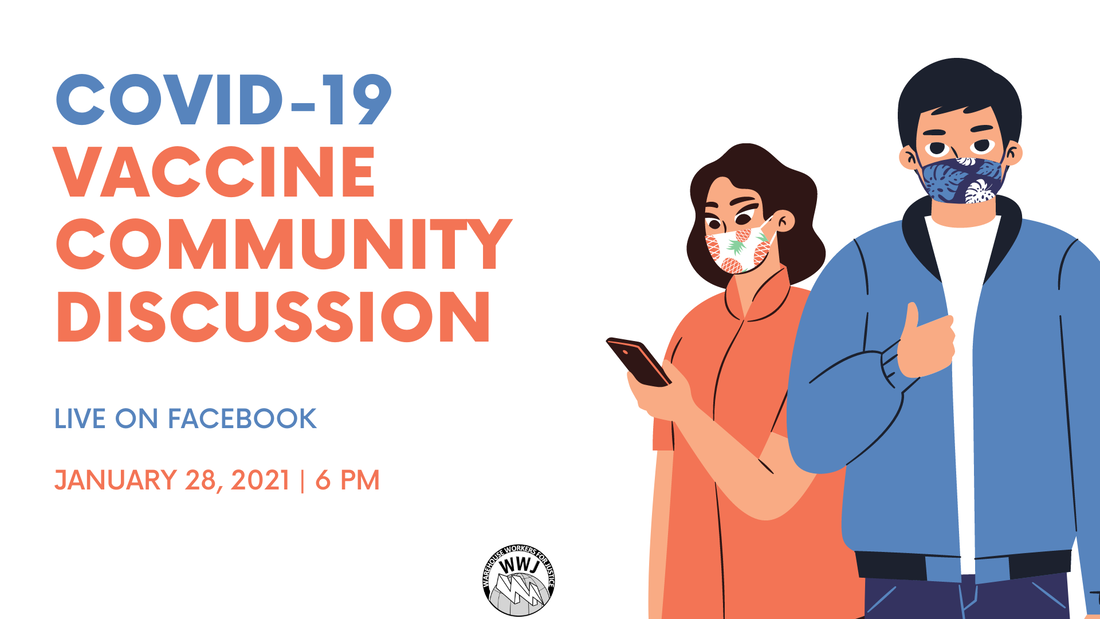WWJ: When the vaccine started rolling out, were there any hesitations among you and your colleagues?
EG: Oh, absolutely. But once I educated myself on the risks and the benefits, and learned about the mRNA technology, I made the decision to go and get my vaccine. Worker question: “What is in the vaccine? How do you know it’s safe enough to put in your body?” EG: That’s a very valid question. When you think about vaccines, normally they’re years in the making. But actually, I’ve been getting the flu vaccine for 20+ years now, and every year it’s a brand new vaccine, based on the viruses from the past year. This type of vaccine, the messenger RNA vaccine, is a new type of vaccine. But mRNA technology has been around since 2005, 2004; it just took a worldwide pandemic to get the whole scientific community to focus on the vaccine. It was new to a lot of people, but this mRNA technology has been around for quite some time now. WWJ: Some of our workers feel uneasy about the ingredients because they think that the vaccine contains the virus. Can you explain why the vaccine won’t cause COVID-19? EG: It’s not a live vaccine. Some vaccines contain a live virus - measles, mumps, and chickenpox are live vaccines. The COVID-19 vaccine does not contain the live virus. It does not alter your DNA; it doesn’t go into the nucleus part of the cell, where your DNA is. It cannot give you COVID. Worker question: “I’m skeptical about taking this vaccine because it was developed too quickly. How can you trust something that was made just a few months ago?” EG: Yes, technically, the COVID-19 vaccine has been made recently. It is a new type of vaccine, using messenger RNA. And hesitating to get the vaccine because of it is totally valid, but I want to reiterate that this mRNA technology has been around since 2004, 2005. And by now, over 23 million Americans have received the vaccine and approximately 68 million humans worldwide. It’s not a live virus, and it’s technology that’s been around and known to people for a while now. Worker question: “I’m concerned over the side effects that the vaccine may cause. I feel like there is not enough data around the short term and long term effects.” EG: yes, there are side effects. Short-term, it’s just like getting your flu shot, but you have to get two of them. The fever, the body aches, the sore arm, the chills, and that’s it. This vaccine was only developed recently. But you could say the exact same thing about COVID. There are a lot of things unknown about COVID, besides the lung damage. Losing your sense of taste, losing your sense of smell - that’s nerve damage. Some people are getting those senses back and others are not. We don’t know the long-term effects of COVID. There’s a clinic collecting data: people are having hair loss, people are having long-term neurological damage, and the long-term damage to your lungs from the acute lung injury. COVID has a lot of unknowns, too. Worker question: “What is the need to have multiple vaccines? Why do you need to take it more than once? How can I ensure my community is not getting the worst version?” EG: if you have children, you know that there are some vaccines that take more than one dose, like HPV and Rotavirus. One of the reasons for that is that it doesn’t overwhelm your immune system. It gives you just enough for your body to start producing antibodies, which are the fighters that can fight off COVID once it gets into your body. That’s why we need two vaccines, to make sure it doesn’t overwhelm the immune system. How do you make sure you’re not getting the worst version? There are multiple versions, but it’s best for everyone in the US and the world to develop herd immunity so we can get things back to normal. It’s in everyone’s best interest, including the government’s best interest, to get you the best version of the vaccine so we can all be protected and get back to normal. Worker question: “I’ve had COVID already. If there’s a limited number of vaccines, why should I take it if my body already has antibodies?” EG: if you’ve had COVID, it’s recommended that you wait at least 3 months post-COVID to get the vaccine. Because you do have antibodies for at least 3 months, but you can get reinfected after that. And now we have these variant strains coming out as well. So in order to keep people protected and keep people they love protected, 3 months post-COVID, get the vaccine. Worker question: “Why should Black and brown communities trust the vaccine when there is a long history of medical racism and tactical ploys from the government?” EG: one of the things that hit me hard before was that when I went to work, I was taking care of the black and brown communities. Our communities were the ones being affected the most. Education is so vital to let people know that yes, this vaccine is new, but this technology has been around for a while and it’s in everyone’s best interest for you to get vaccinated. 68 million people worldwide have already received the vaccine, including a good number of Black and brown people. I’m brown, I had the vaccine, I’m doing well with it. I understand their hesitation, but we are the people who are in the hospital beds. Comments are closed.
|
Archives
December 2023
WWJ News from 2016 and before can be read here: |

